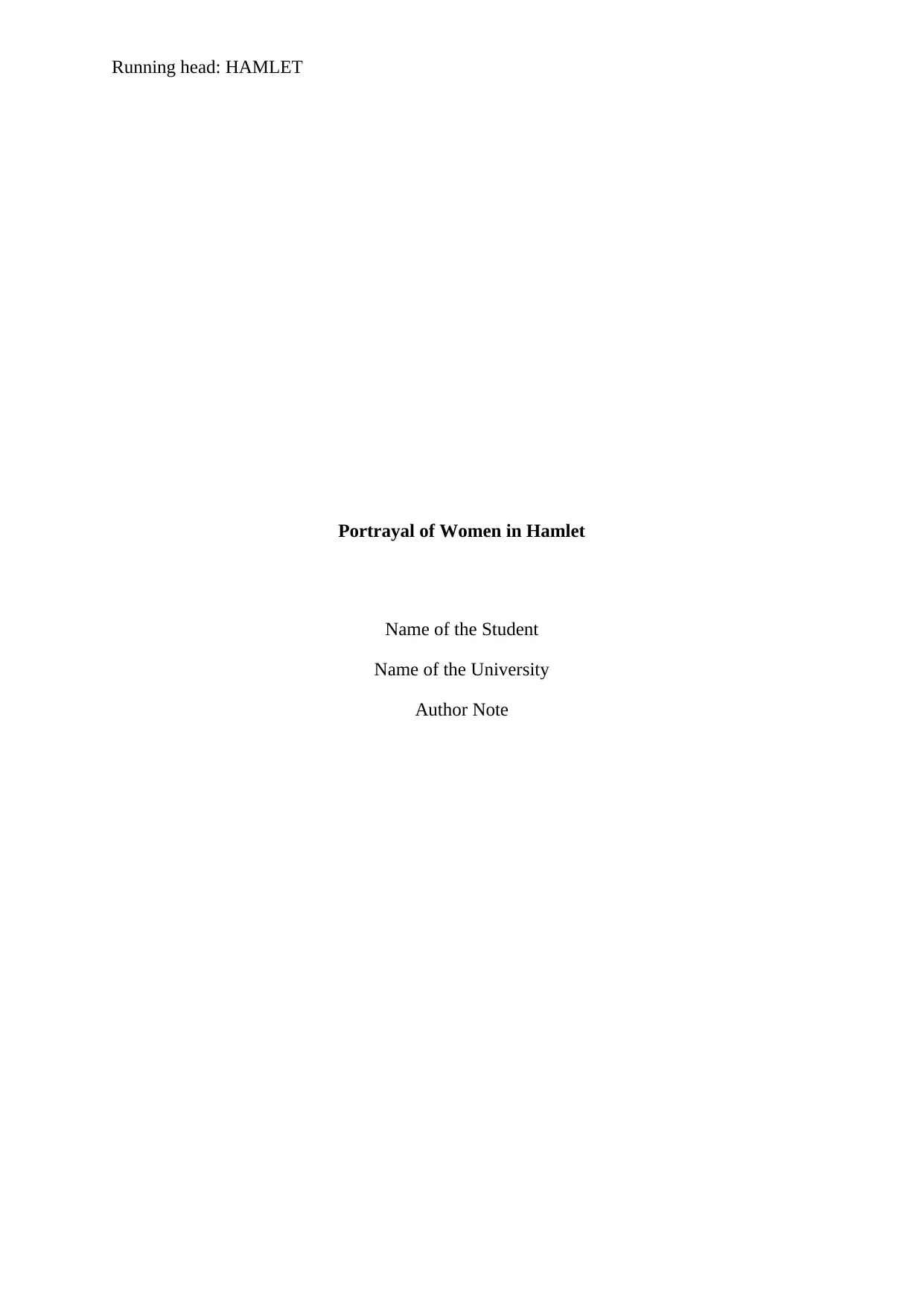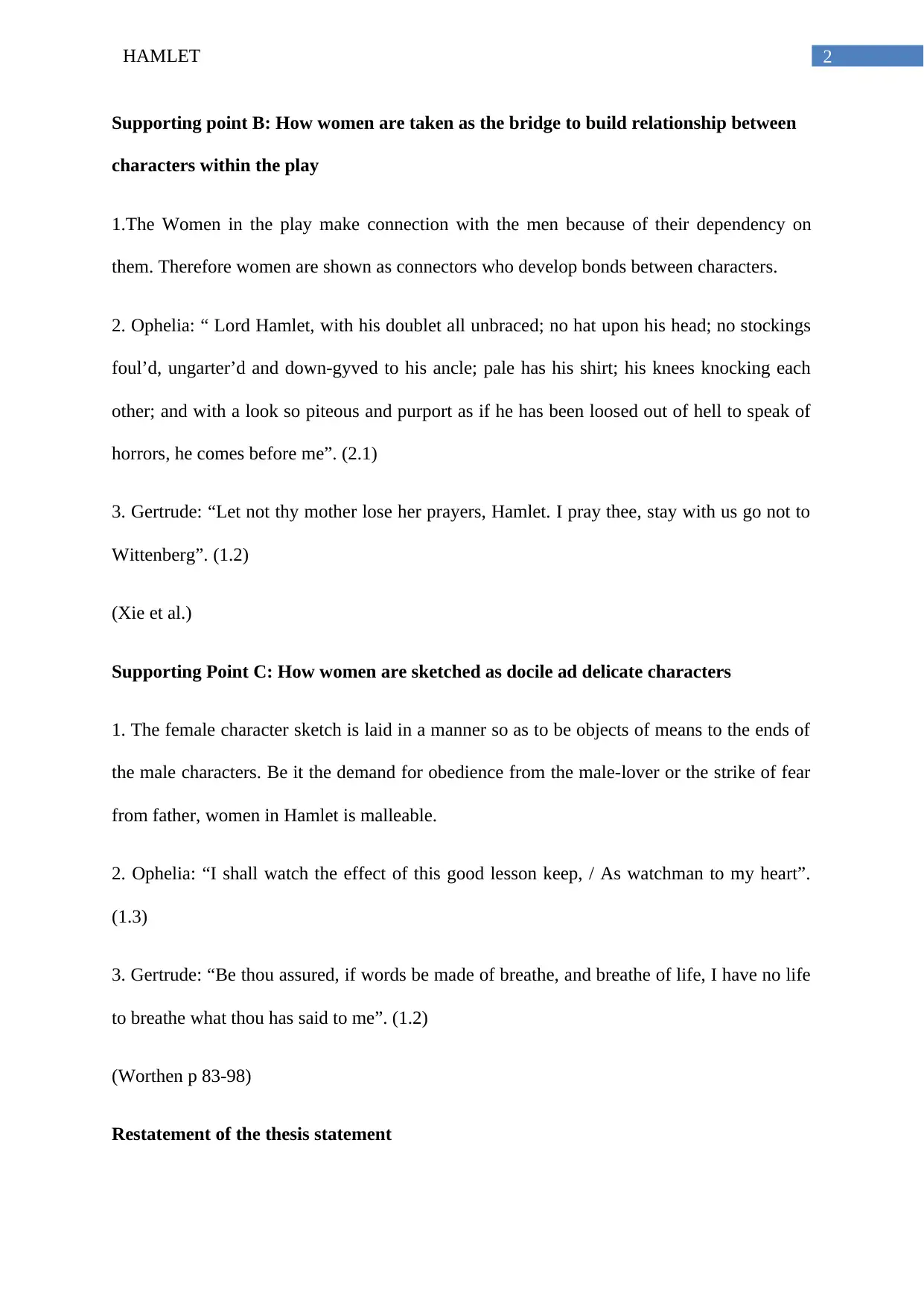Analysis of Female Characters and Misogyny in Shakespeare's Hamlet
VerifiedAdded on 2022/12/03
|5
|746
|266
Essay
AI Summary
This essay delves into William Shakespeare's "Hamlet," focusing on the portrayal of female characters, specifically Ophelia and Gertrude, and argues that Shakespeare employs delicate and naïve female figures to redirect the plot, emphasize emotional connections, and highlight tragic love. The essay supports this thesis by examining how the women are depicted as dependent on men, acting as connectors between male characters, and sketched as docile figures subject to male control. Through textual evidence, the analysis reveals that the female characters' dependency and obedience drive the plot and develop relationships, ultimately showcasing a potentially misogynistic view of women reflective of the era in which the play was written. The essay concludes by restating that the females in Hamlet are undeniably obedient to the male characters and allow the men to make decisions on their behalf. The delicate female characters also work towards the advancement of the plots and development of relationships by showing their constant dependent on the male characters.
1 out of 5








![[object Object]](/_next/static/media/star-bottom.7253800d.svg)